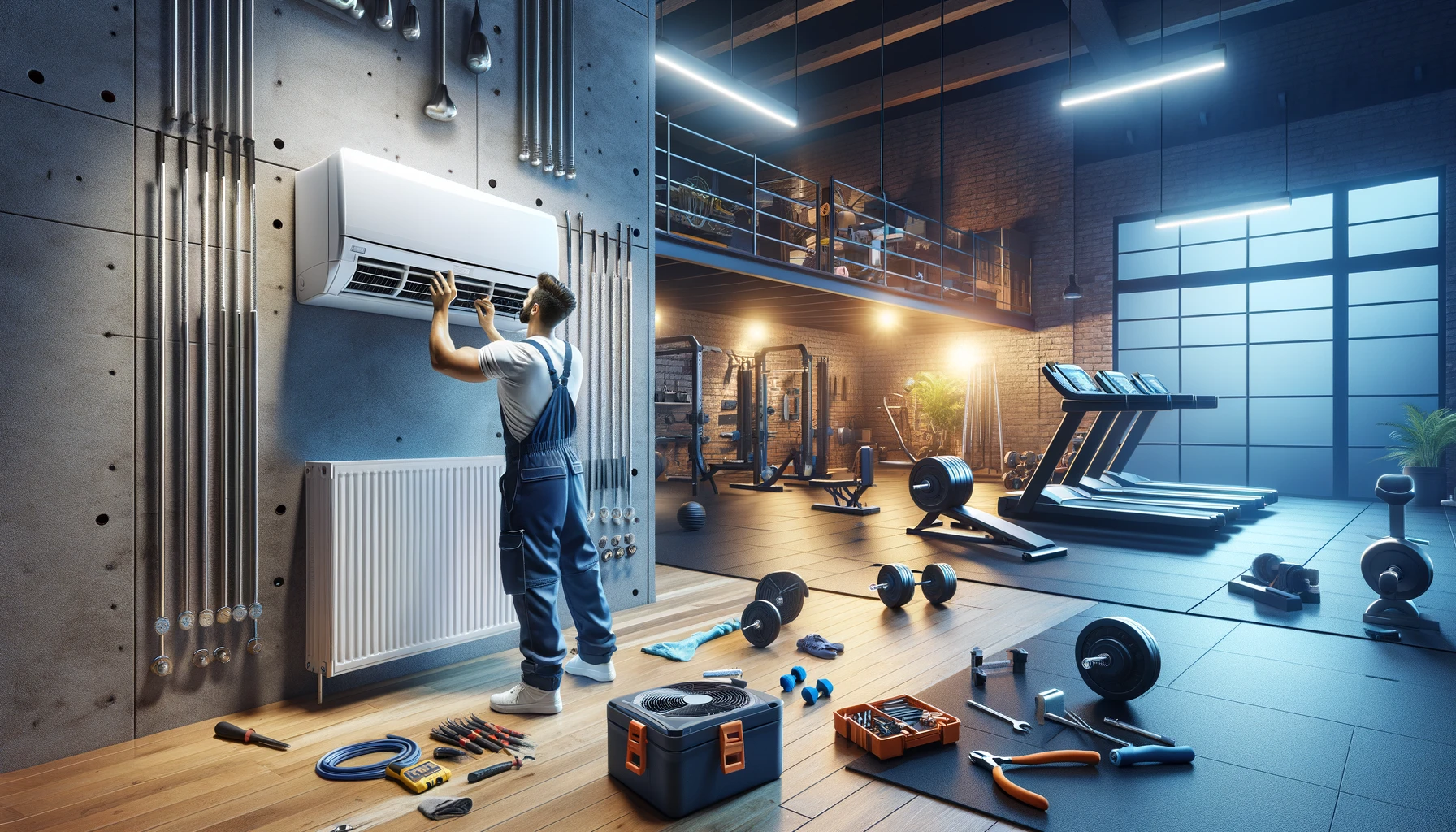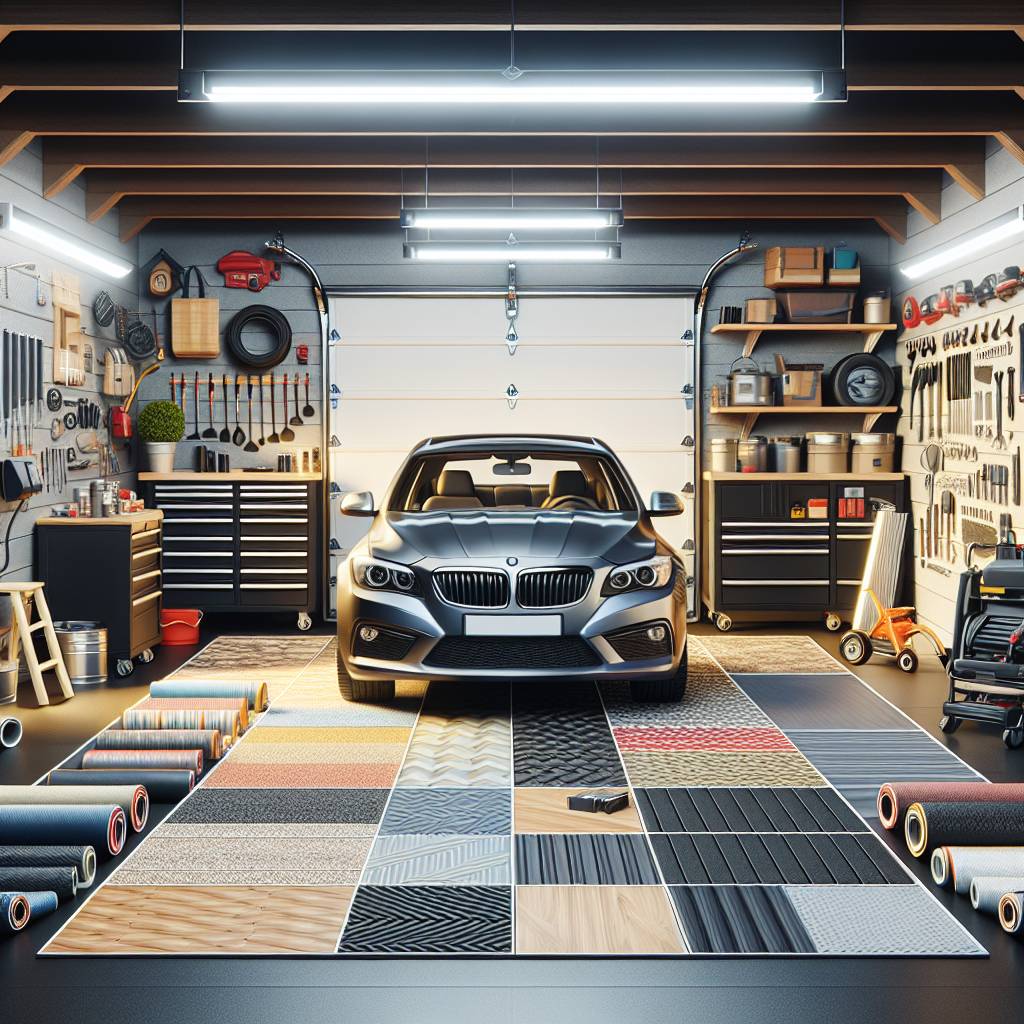Reduce your carbon footprint by optimizing your garage insulation. By enhancing your garage’s energy efficiency, you can make a significant impact on the environment while lowering your energy bills. Garage insulation not only keeps your space comfortable year-round but also contributes to a sustainable lifestyle. Take a step towards eco-friendliness and cost savings with this simple yet effective solution.
Key Takeaways
- Assess Your Garage: Evaluate your garage space to determine insulation needs and potential energy-saving opportunities.
- Choose the Right Insulation: Select suitable insulation materials to maximize energy efficiency and reduce heat loss.
- Upgrade Doors and Windows: Improve insulation by upgrading garage doors and windows to prevent heat transfer.
- Optimize Lighting and Appliances: Switch to energy-efficient lighting and appliances to lower electricity usage in the garage.
- Consider Advanced Green Features: Explore advanced green technologies like solar panels or smart thermostats for enhanced energy savings.
- Regular Maintenance is Key: Maintain your garage insulation and equipment regularly to ensure long-term sustainability and efficiency.
- Track and Enhance Energy Usage: Monitor your energy consumption patterns and make adjustments to further reduce your carbon footprint.
Importance of Garage Insulation
Reduce Carbon Footprint
- Implementing garage insulation significantly cuts down on energy consumption, reducing the overall carbon footprint.
- Making eco-friendly changes in the garage plays a crucial role in lowering your carbon footprint.
- By insulating your garage, you are actively contributing to environmental sustainability.
Enhance Energy Efficiency
- Proper garage insulation is key to improving energy efficiency, ensuring that energy is not wasted.
- Upgrading insulation enhances energy conservation by preventing heat loss through the garage.
- Investing in efficient insulation solutions helps in optimizing energy usage within the garage.
Lower Energy Bills
- Saving on energy bills becomes easier with effective garage insulation that retains heat.
- Energy-efficient upgrades in the garage lead to a significant reduction in monthly expenses.
- Implementing insulation strategies is an effective way of lowering utility costs over time.
Assessing Your Garage
Monitor Energy Usage
Tracking energy consumption helps identify inefficiencies and potential savings opportunities. By monitoring your garage’s energy usage, you can analyze consumption patterns to improve efficiency.
Check Window Efficiency
Evaluate your garage windows to enhance insulation. Upgrading windows can significantly improve energy efficiency by preventing heat loss. Ensure proper sealing and insulation to maximize energy conservation.
Inspect Door Seals
Regularly check and maintain garage door seals to conserve energy. By inspecting and repairing door seals, you can enhance energy efficiency and reduce heat loss. Proper insulation through seal inspection is crucial for energy conservation.
Insulation and Material Choices
Use Recycled Materials
Opt for eco-friendly construction materials in the garage to reduce your carbon footprint. Incorporate recycled materials for sustainable improvements, minimizing environmental impact. By using recycled building materials, you contribute to a greener environment.
Insulate Walls and Ceiling
Enhance energy efficiency by insulating garage walls and ceiling with efficient insulation materials. Improving thermal performance through proper insulation helps maintain a comfortable temperature inside the garage. Prevent heat loss by effectively insulating walls and ceiling, reducing energy consumption.
Upgrade Access Doors
Enhance energy efficiency by upgrading access doors with proper insulation to minimize heat transfer. Improve insulation on interior access doors to achieve significant energy savings over time. Ensure energy conservation through upgraded access door insulation, creating a more sustainable garage environment.
Door and Window Upgrades
Invest in Efficient Doors
Invest in new garage doors to enhance energy efficiency and improve thermal performance. These doors provide better insulation, reducing heat loss and minimizing energy consumption. By upgrading your garage door, you can significantly reduce your carbon footprint.
Installing energy-efficient garage doors is a cost-effective way to make your home more environmentally friendly. These doors help maintain a consistent temperature inside the garage, leading to lower energy bills. Consider investing in insulated garage doors to create a more comfortable and sustainable living environment.
Efficient garage door investments play a crucial role in enhancing the overall energy efficiency of your home. By sealing off small openings and gaps, these doors prevent heat from escaping during colder months. This results in reduced energy waste and a smaller environmental impact.
Add Aluminum Capping
Enhance your garage door system by adding aluminum capping to the door frame. Aluminum capping improves insulation by sealing off any gaps or cracks, preventing air leaks and enhancing energy efficiency. By incorporating aluminum capping, you can further reduce heat loss and increase the overall effectiveness of your garage insulation.
Aluminum capping on garage doors contributes to environmental sustainability by improving energy conservation. This eco-friendly solution helps maintain a stable indoor temperature, reducing the need for excessive heating or cooling. By investing in aluminum capping, you can actively participate in minimizing greenhouse gas emissions.
Ensuring the proper installation of aluminum capping on garage doors is essential for maximizing energy savings. This additional layer of insulation helps regulate indoor temperatures more effectively, leading to lower energy consumption and decreased environmental impact.
Evaluate Windows
Evaluate your garage windows to identify areas for energy efficiency improvements. Upgrading windows with double or triple-pane glass can significantly enhance insulation and reduce heat transfer. By evaluating and improving garage windows, you can create a more energy-efficient space while lowering your carbon footprint.
Upgrading windows in your garage plays a vital role in enhancing thermal performance and maintaining indoor comfort levels. Energy-efficient windows help prevent heat loss during winter and minimize heat gain during summer, resulting in optimal energy savings throughout the year.
Assessing garage windows for energy efficiency improvements is a proactive step towards creating a more sustainable living environment. By investing in high-quality windows that offer superior insulation properties, you can contribute to environmental conservation while enjoying increased comfort and cost savings.
Lighting and Appliances
Change Light Bulbs
Switching to energy-efficient LED bulbs can significantly reduce electricity consumption in your home. These bulbs last longer and use less energy than traditional incandescent ones. They emit less heat, reducing the workload on your air conditioning system.
Consider installing dimmer switches to adjust light levels based on your needs throughout the day. This simple upgrade not only enhances ambiance but also helps save energy when full brightness is unnecessary. Upgrading your lighting fixtures to models with the ENERGY STAR label can further improve energy efficiency.
Check Appliance Efficiency
Regularly maintain your appliances to ensure they operate at peak efficiency. Clean or replace filters in your air conditioning and heating systems to improve airflow and reduce energy consumption. When it’s time to replace an old fridge or freezer, opt for ENERGY STAR-certified models that consume less electricity.
Invest in smart power strips that automatically cut power to appliances when not in use. This prevents standby power consumption, which can account for a significant portion of your electricity bill. Consider scheduling regular maintenance checks for your appliances to identify and address any inefficiencies promptly.
Use Motion Detectors
Install motion detectors in key areas of your home to control lighting and appliance usage based on occupancy. This technology ensures that lights and devices are only active when needed, reducing unnecessary energy consumption. Motion sensors can be particularly beneficial in areas like the garage, where lighting may be left on inadvertently.
Utilize programmable thermostats to regulate heating and cooling based on your schedule, optimizing energy usage when you’re away or asleep. These devices can help reduce energy waste by adjusting temperatures automatically. Implementing proper weatherstripping around doors and windows can also enhance insulation, minimizing the need for excessive heating or cooling.
Advanced Green Features
Consider Solar Panels
ar panels are an innovative technology that can significantly reduce your carbon footprint. By harnessing the power of the sun, solar panels generate clean electricity for your home. Installing solar panels not only helps the environment but also saves you money on energy bills. The initial investment may seem high, but the long-term benefits outweigh the costs.
When considering solar panels, it’s essential to evaluate your home’s sun exposure. Ensure that your roof receives an adequate amount of sunlight throughout the day to maximize the efficiency of the solar panels. Check for any potential shading from nearby trees or structures that could impact the performance of the solar panels.
Insulate Switches and Outlets
Insulating switches and outlets in your garage is a simple yet effective way to improve energy efficiency. By sealing gaps around switches and outlets, you can prevent air leakage, reducing the need for heating and cooling. This small adjustment can lead to significant energy savings over time.
To insulate switches and outlets, you can use foam gaskets specifically designed for this purpose. These gaskets are easy to install and create a tight seal around switches and outlets, preventing drafts and improving insulation. By taking this simple step, you can enhance the overall energy efficiency of your garage and contribute to reducing your carbon footprint.
Maintenance for Sustainability
Repair Garage Floor
Inspect your garage floor regularly to identify any cracks or damage that may contribute to heat loss. Addressing these issues promptly can help maintain a stable temperature within your garage, reducing the need for excessive heating or cooling. Fill in any gaps or crevices with appropriate sealants to prevent air leakage.
Ensure that the garage floor is clean and free of debris before applying any sealant or filler. Use a suitable concrete patching compound to repair any cracks effectively. Pay close attention to areas where the floor meets the walls as these are common spots for heat loss.
Regularly sweeping and cleaning your garage floor can help prevent further damage and extend the lifespan of the flooring. Consider applying a concrete sealer to protect the surface from moisture and environmental factors that could lead to deterioration over time.
Maintain Seals and Insulation
Check the seals around your garage doors and windows at least once a year to ensure they are intact and providing proper insulation. Replace any worn-out weatherstripping or seals to prevent drafts and maintain a consistent indoor temperature.
Invest in high-quality weatherstripping materials to seal off any gaps or spaces that may be letting cold or warm air escape. Proper insulation around garage doors and windows can significantly reduce energy consumption by keeping the environment inside your garage more controlled.
Consider installing an insulated garage door if yours is old or lacks sufficient insulation. This upgrade can make a significant difference in maintaining a comfortable temperature within your garage throughout the year.
Monitoring and Improving Energy Usage
Track Energy Consumption
To track energy consumption, consider installing a smart energy monitor in your garage. These devices provide real-time data on energy usage, helping you identify peak consumption times. By analyzing this data, you can pinpoint areas where energy is being wasted and take steps to reduce it. Regularly reviewing your energy usage trends allows you to make informed decisions on optimizing your garage’s energy efficiency.
monitoring your energy consumption can help you set specific goals for reducing your carbon footprint. By tracking how much energy your garage consumes over time, you can establish targets for decreasing usage. This proactive approach not only benefits the environment but also saves you money on utility bills in the long run.
Optimize Usage Patterns
Optimizing usage patterns involves adjusting when and how you use energy in your garage to maximize efficiency. Consider scheduling tasks that require high energy consumption during off-peak hours when electricity rates are lower. For example, if you have an electric vehicle charger in your garage, charging it during nighttime hours can be more cost-effective and environmentally friendly.
Moreover, implementing energy-saving practices such as using energy-efficient lighting and appliances can significantly reduce your garage’s overall energy consumption. Switching to LED bulbs and investing in ENERGY STAR-rated appliances are simple yet effective ways to optimize your energy usage patterns. These small changes can add up to substantial energy savings over time.
Closing Thoughts
By insulating your garage and making energy-efficient upgrades, you can significantly reduce your carbon footprint while saving money on energy bills. Assess your garage, choose the right materials, upgrade doors and windows, optimize lighting, and consider advanced green features for a sustainable approach. Regular maintenance and monitoring your energy usage will ensure long-term efficiency. Take action now to create a greener, more sustainable living space for you and your family.
Make a difference today by implementing these garage insulation strategies. Your commitment to sustainability not only benefits the environment but also contributes to cost savings and a more comfortable living environment. Start your journey towards a greener lifestyle now!
Frequently Asked Questions
How does garage insulation help reduce my carbon footprint?
Insulating your garage helps regulate temperature, reducing the need for heating or cooling. This lowers energy consumption, decreasing greenhouse gas emissions and your overall carbon footprint.
What are some common materials used for garage insulation?
Common materials for garage insulation include fiberglass, foam board, and reflective foil. Each material offers varying levels of insulation effectiveness and cost, so choose based on your needs and budget.
Can upgrading garage doors and windows contribute to energy efficiency?
Yes, upgrading to energy-efficient garage doors and windows can significantly improve insulation. Insulated doors and windows prevent heat transfer, keeping your garage at a stable temperature and reducing energy usage.
Are there specific lighting options recommended for a more eco-friendly garage?
Opt for LED lighting in your garage for energy efficiency. LED lights consume less electricity, last longer, and produce less heat compared to traditional incandescent bulbs, making them an eco-friendly choice.
How can I monitor and improve energy usage in my insulated garage?
Consider installing a smart energy monitor to track your energy consumption in real-time. This allows you to identify areas of high usage, make adjustments, and optimize your energy efficiency over time.






